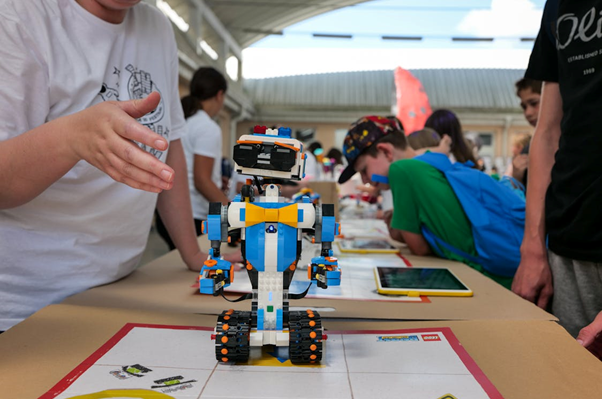Are there any benefits of learning robotics at a young age?
An excellent method of introducing scientific and technological ideas in a real-world context is through educational robots. Through engaging and having fun with robots, students can learn about mechanics, electronics, coding, and other STEM topics. It is a practical experience that enhances their comprehension of theoretical ideas, presents them in an interesting and inspiring way for younger students, and piques their curiosity about STEM fields, dispelling the myth that these are unduly difficult subjects.

Benefits of Learning Robotics at a Young Age
The employment market is becoming more and more reliant on technology, and robots is one aspect of this change that many jobs are going through. Young children who are exposed to educational robots will have a strong foundation of new knowledge that will help them in the future to comprehend and interact with evolving technologies. In a growing number of industries, the abilities that individuals can develop through robotics, programming, and computational thinking are highly prized.
Children are more inclined to build anything when they are younger. They are eager to undertake additional practical experiences after they have a firm grasp of robotics theory. For example, connecting circuits, assembling components, handling a variety of tools and tiny components and making sure they fit properly, etc.
- Assembling and creating robots requires kids to use their hands to handle small parts and components, which helps them develop their motor skills.
- By programming robots, children can learn to type and use a computer mouse, which will improve their dexterity and hand-eye coordination.
- By utilising robots to accomplish tasks, children can develop their motor control and coordination skills. because they have to employ programming or other techniques to control the robot’s behaviour.
When kids participate in the creation and sharing of significant projects with their class, they learn more efficiently. In general, kids construct, program, and utilize their robots to complete tasks and overcome obstacles. In this sense, robotics can provide kids with an enjoyable and interesting way to acquire and practice motor abilities.
Unlike any other tool, robotics provides an engaging and interactive learning experience that could capture a child’s interest. Many children have successfully boosted their conceptual knowledge in science courses by 57% after incorporating robotics in their educational programs, according to a Nanyang Technological University study (Review on the use of Robots in Educational and Young Children).
Children can study STEM through hands-on projects and observation when they learn robotics. particularly the projects that demonstrate how the theoretical ideas covered in the class are applied in practical settings.
- It needs understanding of concepts like force, motion, and energy to create and program robots. Children’s knowledge of mechanics and physics will advance here.
- Youngsters can learn about a variety of materials as well as how to plan and build robust structures.
- Programming robots with algorithms and logical reasoning teaches children computer science concepts.
- When designing and programming robots, children may need to use mathematical concepts such as geometry, measurement, and algebra.
Also Read: Next-Level Fun- Treat your kid to a science and robotics birthday party today!


